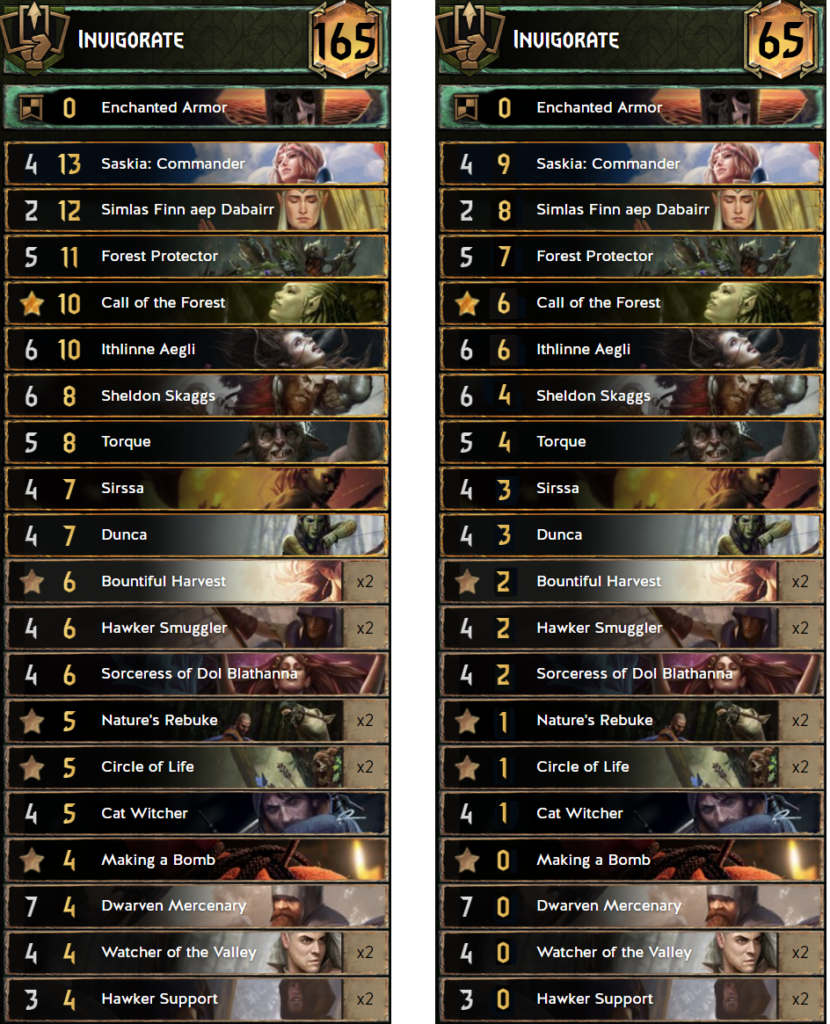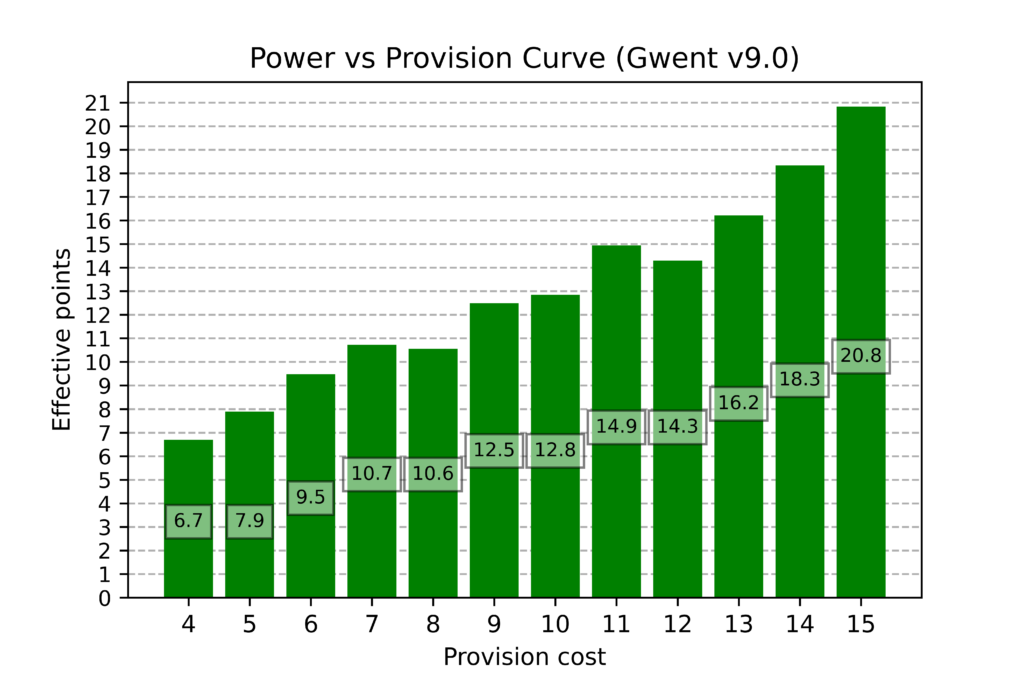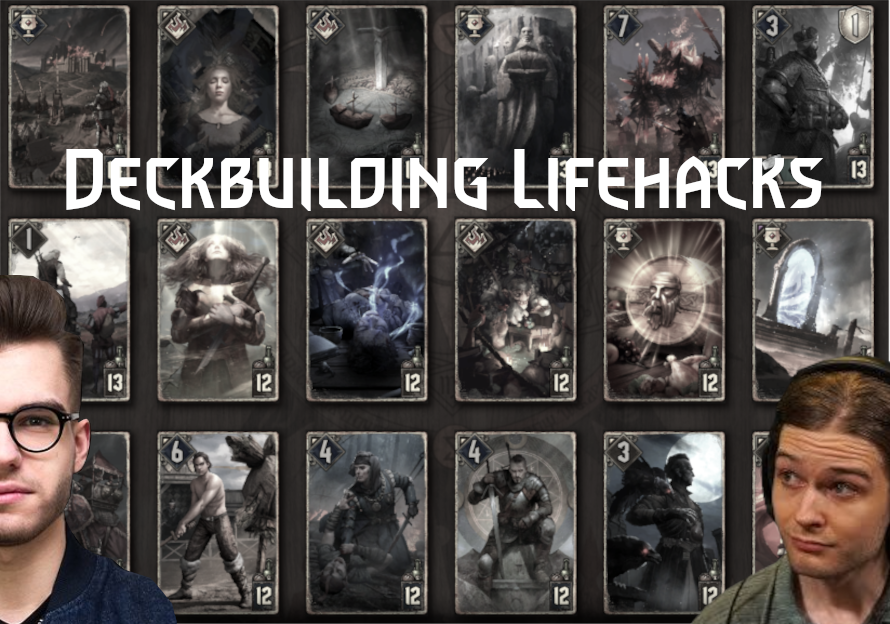Introduction
Deckbuilding is an art and science at the same time. It has to be studied, but not everything could be learned. Providing us with best possible tools before starting the deckbuilding adventure would make the learning process more pleasant and productive.
In this article we would look into three deckbuilding lifehacks used by best Gwent players in a more or less conscious way. Let’s start.
Nullifying Provision System
There is a brilliant Trynet’s article available on his website, which probably didn’t still get enough recognition. Let’s squeeze its essentials.
The lowest possible provision cost of a card is equal to 4. If your deck consists of exact 25 cards, then the minimal total provision cost is 100. Each next card adds +4 to provision floor.
Decks playing more than 25 cards are very niche though and never have been competitive in Gwent Homecoming. Therefore, let’s forget the possibility of playing additional card.
If so, then why not just subtract these base 100 provisions from the deck and adjust provision cap accordingly?
4 prov card => 0 prov card
165 prov cap => 65 prov cap

With provision offset popped off, the real cost of cards becomes more comprehensible. Now it becomes clear that 1 Hawker Smuggler has same real provision cost as 2 Rebukes. The differences in provision costs in 4-base original system were obviously correct, but proportions heavily distorted.
All mathematical evaluations becomes way easier in the new system. Let’s take Blightmakers + Mage Assassin combo (Gwent 10.1). Have you come across people assessing the combo as 11 points for 10 provision? A big mistake, but it wouldn’t happen in the 0-base system.
Blightmaker cost is 2 and combo value is simply 11 for 2. And whenever you want to communicate in 4-base convention, simply add +4 to your 0-base result (11 for 6 in this case)
Another recent example for demo: Old Speartip: Asleep combo introduced in Gwent 10.1. Superficial approach would say the value is 18 points for 17 provision, but let’s compute provision cost in 0-base.
OS:Asleep cost is 2 and OS cost is equal to 7. This gives 9 points total. Going to 4-base, as in Blightmaker example, we communicate: 18 points for 13 provision (correct!).
Power vs Provision Curve
For how many points a card should play to be good given its provision cost? The answer is not simple as card effects are dynamic, and only practice really shows their real value.
Try to observe and catalogue for how many points various cards in meta decks really play with respect to their provision. It would save you a lot of time in the future.

Above is an exemplary Power vs Provision curve I made together with some of the best Gwent players (Iluxa, Pajabol, Redrame…) half year ago. It was published on Gwent Reddit.
While particular values may fluctuate, I believe this curve is still a good rule of thumb deckbuilding tool. Cards not having potential to play on or above provision curve, should simply be forgotten about asap and don’t leave deckbuilder.
Cards with potential to play on provision curve deserve testing, cards without potential are dead at the moment of printing. To assess effective power of a card imagine having a 0 point blank card in hand instead. How many points are lost for you and how many are gained by opponent after such replacement?
Gwent Deck is Built Top-Down
This paragraph would be based on some thoughts shared by TailBot on his streams.
Which Gwent card is the worst one? In other words, playing which single card would ruin your winrate most (Gwent 10.1)?
Maybe it’s Peasant Militia? Hmm… rather not. You could just mulligan it out and deck remains solid. It must be a very expensive gold card then, playing for low effective value on average and blocking the way for better cards. Contest is tight there with Ale of Ancestors, Syanna or Sihil amongst frontrunners.
What do we learn from this example? The decisions you make on choosing golds garnish are of crucial importance, while some under-optimization amongst bronzes has lower impact on your deck winrate.
Golds are deck definers and therefore it is smart to built your deck top-down, starting from gold cards which would find best value in the current meta according to your judgement.
Only then you should start optimizing deck between weakest golds in the build, low-end golds, and high-end bronzes.
Closure
With ‘nullifying’ article, the list of my planned articles got nullified as well at the moment. Next content would emerge spontanously with me learning the meta and trying to find some good decks.
Stay tuned!

